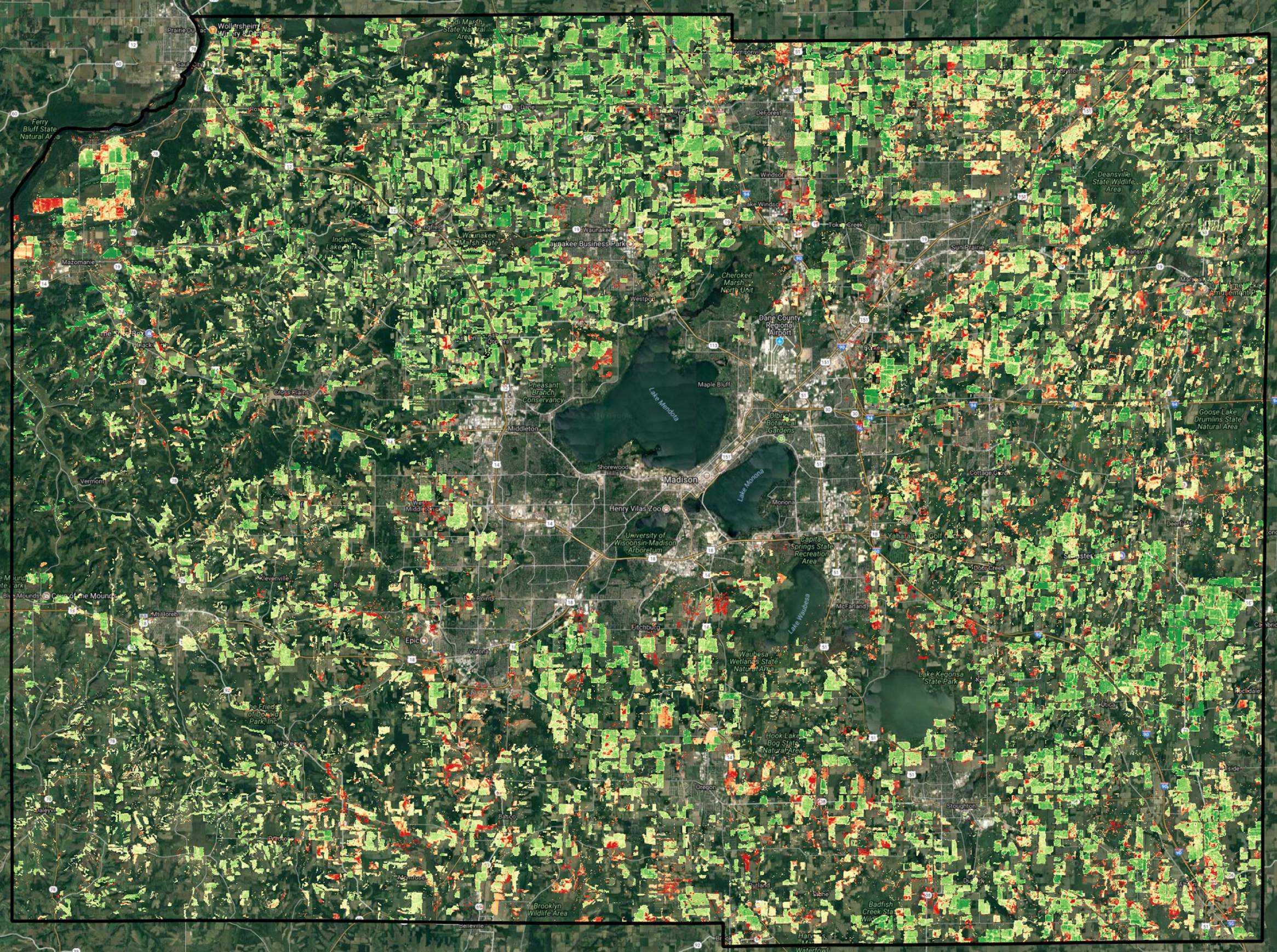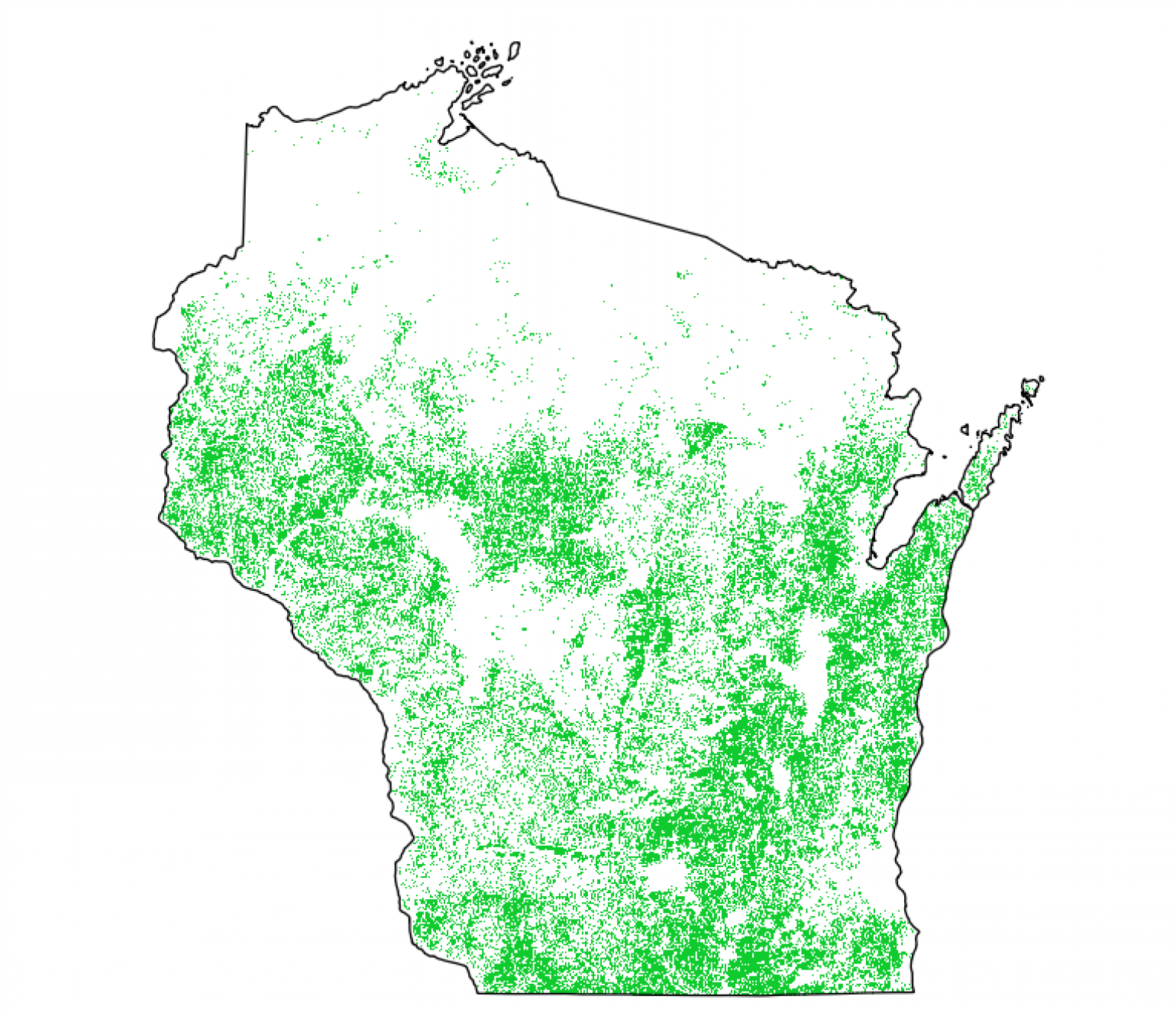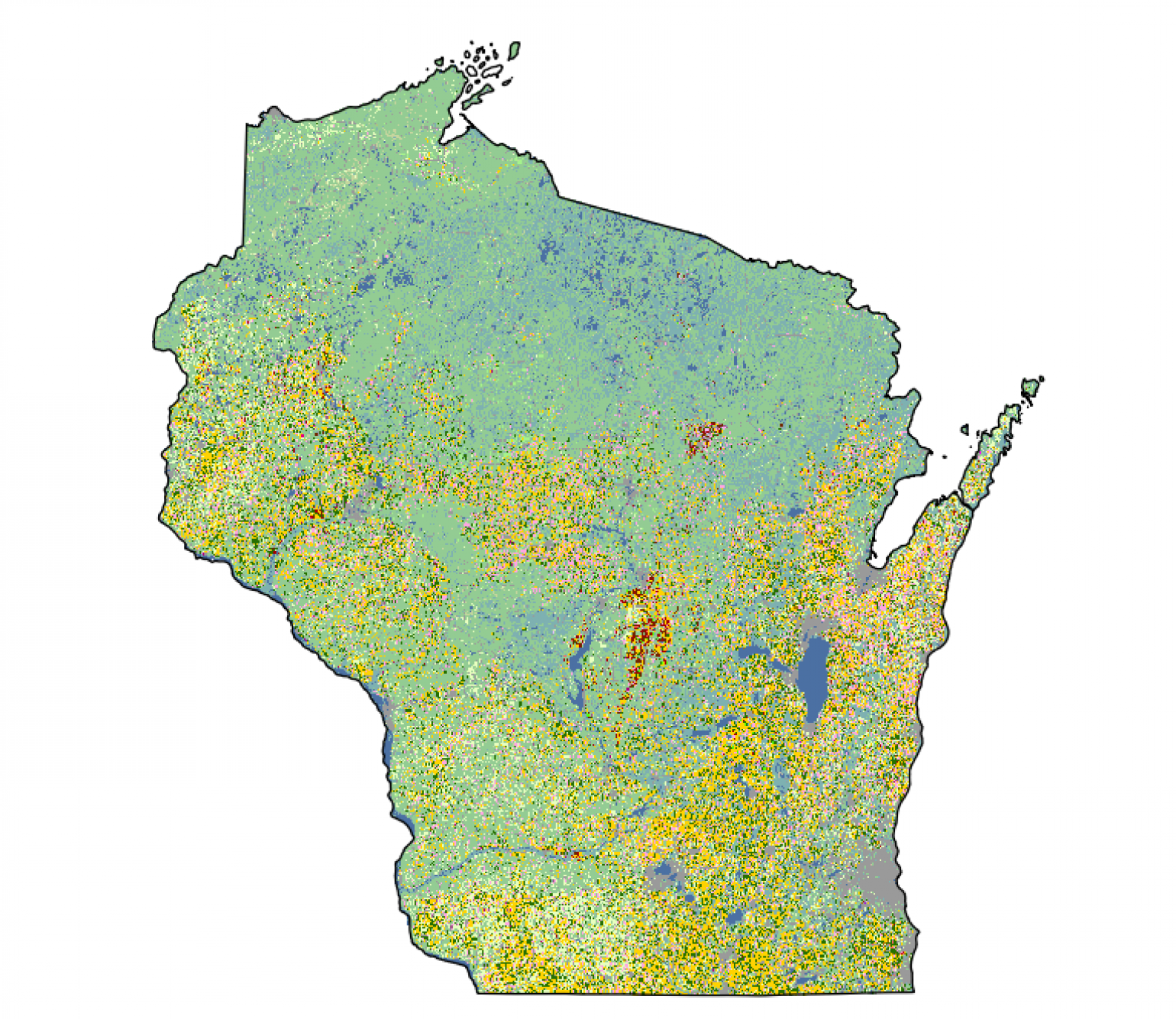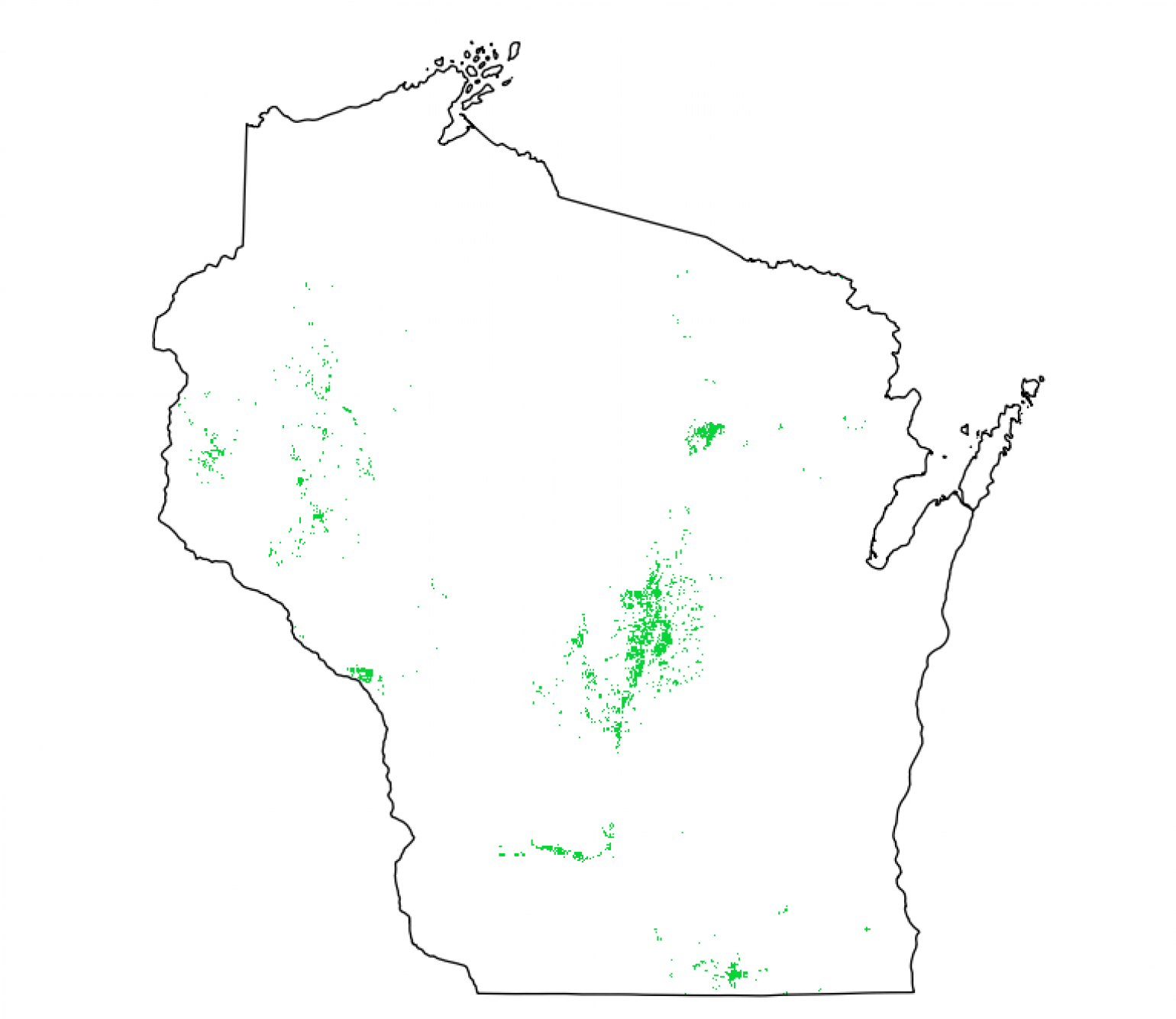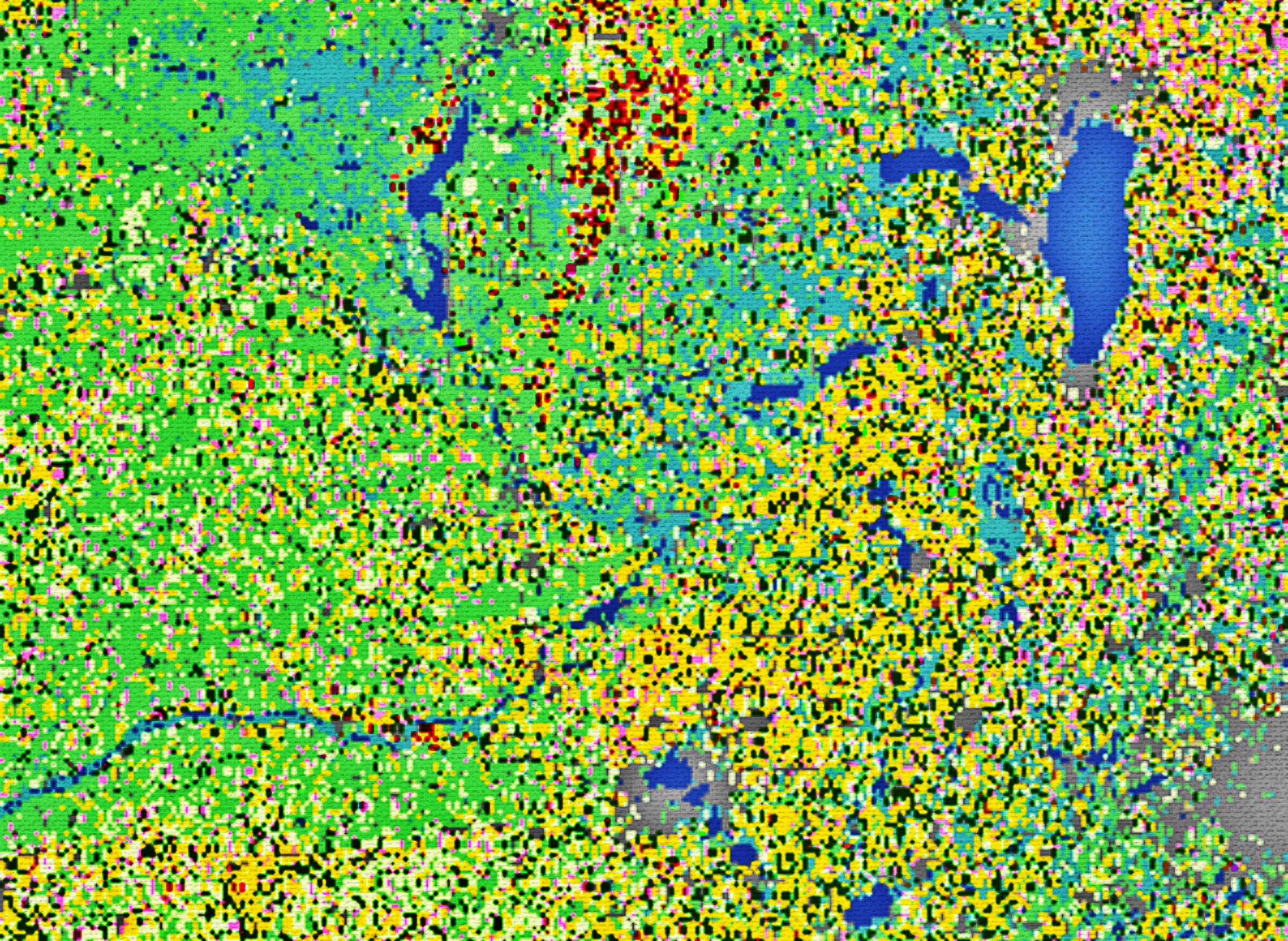
Gaining A Satellite's-Eye View Of Where Food Is Grown

Using space-based cameras onboard satellites that orbit Earth at a distance of more than 400 miles above sea level, scientists are able to estimate the yield of individual corn and soybean fields across Wisconsin.
That capability is only one among an expanding suite of remote sensing functions made possible by satellite imagery, as well as advances in computing technologies, that researchers from the University of Wisconsin-Madison and elsewhere are using to better understand the planet's croplands.
Tracking global croplands and how they are changing is a massive, pressing and complex undertaking: 40% of Earth's land surface is used for agriculture, and much of it is remote and poorly documented. Meanwhile, as the world population grows toward an estimated 10 billion people by 2050, most of the remaining share of arable land not already under cultivation is in ecologically sensitive regions like the Amazon River Basin in South America.
The main challenge for the agricultural sector moving forward will be to produce significantly more food without depleting natural resources, and one of the best ways to understand how farmers respond to these global pressures and constraints is from a distance, specifically low-earth orbit. That perspective is the focus Mutlu Özdoğan — an associate professor of forest ecology and environmental studies at UW-Madison’s Nelson Institute for Environmental Studies — who leads a research group that maps global croplands.
"Agriculture has this sort of interesting balancing act," Özdoğan said at a February 21, 2018 talk for the Wednesday Nite @ The Lab lecture series on the UW-Madison campus, recorded for Wisconsin Public Television's University Place. "Not only do we have to … increase food [production], and also help people bring a livelihood out of agriculture, but also we need to do that without wreaking havoc [on] this planet."
Documenting how farmers adjust to a world in flux is one goal of Özdoğan's research, which utilizes imagery from NASA's Landsat satellites and the muscle of cloud computing to develop detailed maps of the globe's croplands at exceptionally high resolution — 30 meters — a goal achieved in collaboration with several other institutions. In Wisconsin, these maps precisely display where topography and soil-type have limited the spread of cropland in regions like the Driftless Area and Black River State Forest.
Assuring cropland maps are as accurate and robust as possible involves a multi-step process, beginning with human analysis of thousands of images, Özdoğan said. He and his colleagues sifted through the imagery to identify where land is used for agricultural purposes, a process that's easier in some regions than others. For instance, irrigated fields in the deserts of Arizona or Saudi Arabia starkly stand out against the arid landscape, while agricultural fields can be difficult to tease apart from non-agricultural land in some parts of Africa and Asia.
In Wisconsin, agricultural land is relatively easy to pinpoint, Özdoğan said, as fields follow familiar patterns and stand out against natural and urban landscapes.
Once the team has identified a certain number of images, researchers use machine learning to speed up the task of screening images of the planet's entire landmass. They do this by their human-interpreted results into a computer algorithm, which then applies those results to uninterpreted images. On-the-ground confirmation helps validate and fine-tune the computer-generated maps, Özdoğan said.
The results of this work are maps that can help track large-scale trends in global and local agriculture.
Among the functions Özdoğan's team and others have developed are the ability to map crop types, their estimated yield and whether crops are irrigated — an increasingly important variable as the world's freshwater resources are placed under ever more pressure. Nearly 80% of the globe's freshwater is used for agricultural purposes. In Wisconsin, irrigation maps highlight regions well-known for their irrigation use, such as the Central Sands, but also smaller areas such as one along the Wisconsin River valley around Spring Green.
In addition to tracking long-term trends in agriculture, the Landsat-based imagery can also keep tabs on crop progress during individual growing seasons. These data can help researchers and policymakers more precisely account for the effects of poor planting and growing conditions, like those experienced by farmers in Wisconsin and the upper Midwest in 2019. This information could be useful for helping farmers be more resilient to changing growing conditions in the future.
"Agriculture has great data needs," Özdoğan said. "I think remote sensing can address some of these needs."
Key facts
- Croplands cover about 40% of Earth's land surface, and about 80% of the globe's freshwater resources are used for agriculture.
- Satellite remote sensing of global croplands involves attaching advanced cameras onto satellites that orbit the Earth and take images in the visible light spectrum, as well as short- and long-wave infrared and thermal infrared. Maps of croplands can be developed at a resolution of 30 meters, the most finely detailed satellite-derived maps yet.
- Advances in computing and policy changes that allow better access to U.S. government satellite imagery have allowed for much more robust and larger-scale satellite remote sensing projects in recent years, including the mapping of global croplands.
- On-the-ground observations help validate the algorithm-produced cropland maps. In some areas, including Wisconsin, it is possible to map variables like crop-type, irrigation and crop yield to a reasonable degree of accuracy.
- In the future, remote sensing could help track land-use and cropping changes as farmers adapt to market forces and a changing climate. It could also provide an empirical source for estimating crop yields around the world.
Key quotes
- On how researchers train algorithms to identify different types of agricultural areas in satellite imagery: "We reached out to global organizations like the [Food and Agriculture Organization of] the United Nations, and other organizations that helped us collect literally thousands of on the ground examples of what agriculture looks like, so that we can take those examples, and then feed them into a smart computer algorithm so that those algorithms could recognize what agriculture looks like. And obviously, that is really different across different parts of the world. In the Midwest, agriculture looks very different than what it looks like in China or in India for example."
- On why tracking some specific variables, such as the type of crop, requires a more involved analytical approach than simply mapping croplands overall: "As the information that we acquire from satellites becomes more refined, like going from agriculture versus not agriculture, to what type of agriculture it is, the signal that exists in satellite data declines … [If] I was to show you corn and soybean [field] in a satellite image in a particular time of the year, you couldn't really distinguish them from each other. That's because at that particular time instance, they are both green, and we don't necessarily see the leaves."
- On the importance of mapping croplands continually over multiple seasons rather than simply one season: "Every year, crops parcels change. So around [Wisconsin], if I was to create a label for a parcel of land, that label would look something like corn-soy dominated. And in North Dakota, it might be wheat-soy dominated."
- On why the accuracy of cropland maps is better is some regions, such as North America, than other regions of the world: "Maps will vary highly in their quality depending on how much ground data that we would have access to, and how much satellite signal, or how easy it is in the satellite signal to define that particular crop type."
- On limitations of satellite remote sensing of croplands: "If you ask me to tell you how much fertilizer a farmer puts on their field, using satellite data that’s pretty much impossible. Maybe we'll get there in the future, but we're not there right now."



